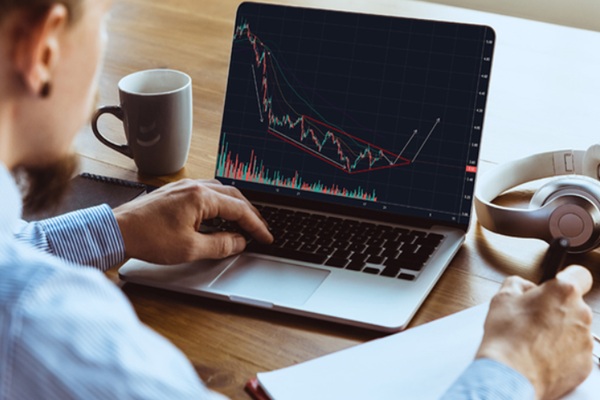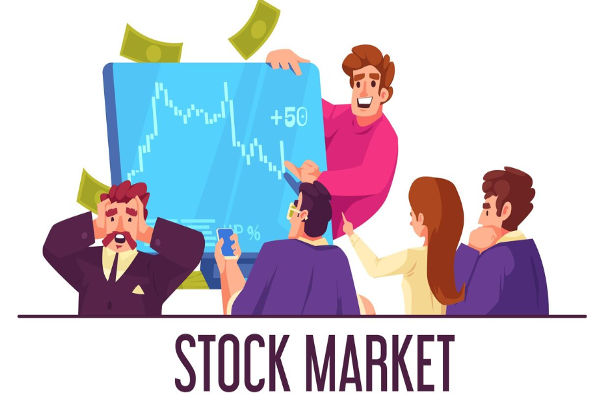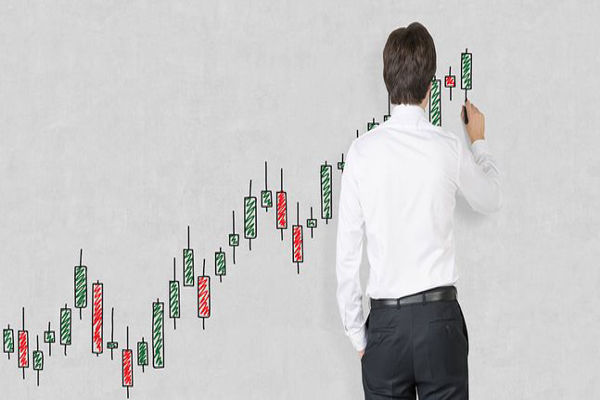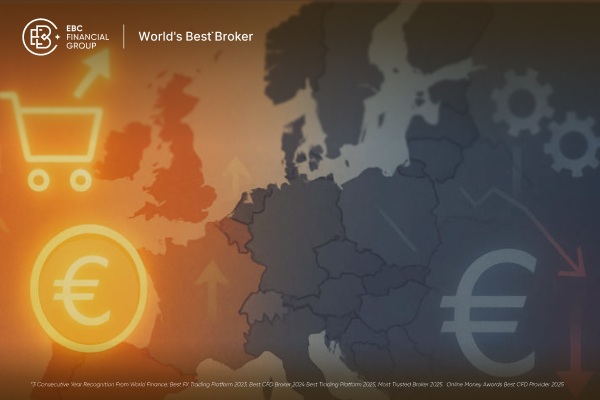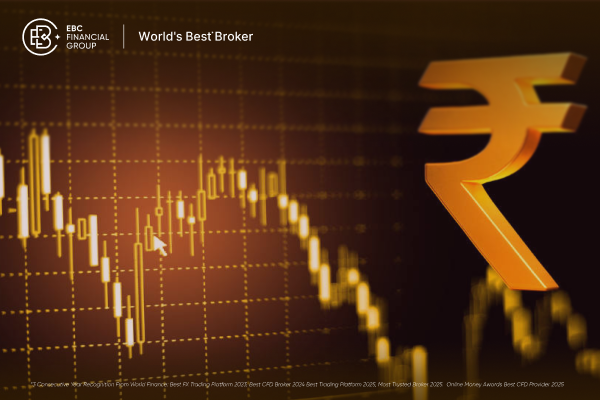How to get into trading starts the same way, staring at a price chart, watching candles move, and wondering how some people seem to predict what happens next. The truth is, no one really predicts. They prepare. Trading is not about seeing the future, but about learning how to read the present and act with precision. The path to becoming a trader is not a sprint; it is a structured journey through skill, discipline, and data.
In 2025, trading has become one of the most accessible forms of financial participation in history. With smartphones that can execute orders in milliseconds and global markets running around the clock, anyone can begin. Yet the ease of access hides a complex truth, most beginners lose money not because markets are unfair, but because they underestimate how much they must learn. This article explains how to get into trading the right way, from understanding market mechanics to building a data-driven routine and applying risk control like a professional.

Understanding How to Get Into Trading Really Means
Trading, at its core, is the act of buying and selling financial instruments to profit from price changes. These instruments range from currencies and commodities to stocks, indices, bonds, and derivatives. In 2025, over 60 percent of global retail traders operate across multiple asset classes. The total daily trading volume in forex alone exceeds 7.5 trillion US dollars, according to the Bank for International Settlements.
However, trading is not gambling. It requires systematic decision-making, probability management, and an understanding of how macroeconomic and psychological forces shape price. Professional traders rely on frameworks, not feelings.
How to Get Into Trading vs How to Get Into Investing
While investors typically buy and hold for years, traders seek shorter-term profits. Swing traders hold positions for days or weeks, day traders open and close trades within hours, and scalpers move in and out within seconds. The difference lies not only in time horizon but also in mindset: investors focus on value, traders on volatility.
Step 1: Learn the Foundations of Market Structure
Every market has rules. Price moves because of supply and demand, but those forces are influenced by liquidity, volume, and sentiment. To truly know how to get into trading, start by understanding these basics:
Order Flow: Every trade has a buyer and a seller. The imbalance between them determines direction.
Candlesticks: Each candle shows open, high, low, and close prices for a given period. Learning to interpret patterns helps identify turning points.
Support and Resistance: Prices often react at specific historical levels. Recognising these zones builds the foundation for technical analysis.
Volatility: The faster the price moves, the higher the risk and potential reward. The 2025 VIX average sits near 18.5, reflecting moderate volatility across global equities.
Real-Life Example: Gold in 2024-2025
Between August 2024 and March 2025, gold moved from 1,890 to 2,400 USD per ounce as central banks increased reserves amid inflation concerns. Traders who understood trend structure and volume divergence could identify potential breakout points early. This is how knowledge of fundamentals and technical structure intersect.
Step 2: Choose Your Market and Style
Trading is not one size fits all. The best traders specialise. You must decide which markets and strategies suit your personality, capital, and time.
Trading Styles
Day Trading: Multiple trades per day, capitalising on intraday volatility.
Swing Trading: Holding trades for several days to capture medium-term trends.
Position Trading: Based on macro analysis, positions held for weeks or months.
Algorithmic Trading: Using automated systems for consistency and speed.
In 2025, algorithmic and semi-automated trading make up nearly 78 percent of global market volume, according to Refinitiv Analytics. However, human discretion remains vital for adapting to unexpected events.
Case Study: Retail Success Story
In 2023, a Malaysian engineer turned trader began swing trading energy stocks using simple moving averages and volume breakouts. By 2025, after consistent 2 percent monthly returns and rigorous risk management, he transitioned to trading full-time. His key lesson: “The system is nothing without discipline.”
Step 3: Learn Analysis — Technical, Fundamental, and Sentiment
Trading decisions rely on analysis. Three major pillars guide professionals.
Technical Analysis
Charts reflect all available information. Tools such as moving averages, Fibonacci retracements, and relative strength index (RSI) help quantify momentum. In 2025, AI-driven charting software can automatically detect trend lines and patterns, improving speed and reducing human error.
Fundamental Analysis
Fundamentals drive long-term direction. Economic indicators such as GDP, inflation, and employment data affect currencies and indices. For instance, when the US CPI cooled from 3.1 percent to 2.7 percent in June 2025, it triggered a rally in risk assets and a decline in the dollar.
Sentiment Analysis
Market mood often dictates short-term price action. Social media sentiment tracking and futures positioning data now play a large role. The Commodity Futures Trading Commission’s weekly Commitment of Traders report helps traders gauge institutional positioning.
Real-World Example: EUR/USD Reaction to ECB Policy
In February 2025, when the European Central Bank held rates steady amid slowing inflation, EUR/USD surged from 1.07 to 1.09 within a week. Traders who combined macro understanding with chart confirmation saw opportunity before momentum traders joined the move.
Step 4: How to Get Into Trading Plan
A trading plan is a rulebook for consistency. It defines what, when, and how you trade. Without one, emotional decisions dominate.
Key Components
Entry and Exit Rules: Specify what triggers a trade and what ends it.
Risk Parameters: Decide how much of your capital you risk per trade, often 1–2 percent.
Position Sizing: Use formulas based on account size and stop-loss distance.
Record-Keeping: Maintain a journal of trades, results, and emotions.
A 2024 MIT behavioural finance study found that traders who journaled every trade improved performance consistency by 18 percent after three months.
Example: The “2 Percent Rule”
A trader with £10,000 capital risks only £200 per trade. If stop-loss is 50 pips, the position size is adjusted accordingly. This ensures survival even after consecutive losses.
Step 5: Learn to Use Platforms and Tools
Trading platforms act as your workstation. The most popular globally are MetaTrader 4, MetaTrader 5, and TradingView, offering real-time charts, indicators, and order management. In 2025, over 85 percent of retail traders use at least one mobile app linked to these platforms.
Key Features to Master
Chart customisation and templates
Order types (market, limit, stop)
Risk management tools
Backtesting and demo trading functions
Before going live, spend at least two months on a demo account. Historical data suggests traders who practise for 60 days before funding real accounts have 32 percent higher survival rates after one year.
Step 6: Manage Risk Like a Professional
Even the best strategies fail without proper risk control. Success in trading is less about predicting markets and more about limiting damage when wrong.
Essential Risk Techniques
Stop-Loss Orders: Automatically close losing trades to prevent catastrophic losses.
Take-Profit Targets: Secure profits before reversals occur.
Diversification: Avoid concentrating all trades in one asset or sector.
Leverage Control: Use lower leverage ratios until confident. In 2025, global regulators limit retail leverage to between 30:1 and 100:1, depending on jurisdiction.
Real-World Case Study: The 2024 Yen Shock
In October 2024, the Japanese yen surged 3 percent within hours after surprise intervention by the Ministry of Finance. Many traders without stop-losses were wiped out. Those who risked only 1 percent of capital and used stops limited losses to negligible levels. It remains one of the strongest modern lessons in risk discipline.
Step 7: Build Psychology and Routine
Trading psychology is the hardest skill to master. Greed, fear, and overconfidence destroy more accounts than poor analysis.
The 2025 Psychological Landscape
A report by the CFA Institute found that over 70 percent of retail traders suffer performance anxiety during drawdowns. Consistency comes from process, not emotion. Techniques such as mindfulness and structured routines improve decision-making.
Example Routine for Beginners
Pre-Market (30 minutes): Review economic calendar and overnight news.
During Session: Execute trades according to plan only.
Post-Market: Journal trades and analyse outcomes.
Weekend: Backtest and refine strategies.
Research from the London School of Economics (2025) shows that traders with consistent pre- and post-market routines achieve up to 20 percent higher profitability than those without structured habits.

Step 8: Start Small, Then Scale
Trading should begin small. Use a micro account or the smallest lot size possible. Focus on accuracy, not profit. The goal in the first six months is survival and learning.
Example: From Demo to Live
A new trader starts with a demo account, averages 52 percent win rate, and learns to manage risk. After three months, they open a live account with £1,000. By trading conservatively and risking only £10 per trade, they build a record of 1 percent monthly returns. Scaling comes only after proof of discipline.
Data Insight
According to Statista (2025), the average success rate for consistent profitability among retail traders stands at roughly 17 percent. However, those who combine education, backtesting, and journaling double their odds of long-term survival.
Step 9: Continue Education and Adaptation
Markets evolve. What worked in 2020 may fail in 2025 due to changing liquidity, algorithms, or regulations. Continuous education keeps traders relevant.
Follow Economic Reports: Use official sources such as central bank announcements and IMF forecasts.
Attend Webinars and Workshops: Many brokers and institutions host free global sessions on strategy and psychology.
Read Authoritative Texts: Works like “Technical Analysis of the Financial Markets” by John Murphy remain timeless, while modern AI-driven trading research adds new layers of depth.
Case Study: The Post-Pandemic Trader
A trader who relied solely on momentum strategies during the 2020–2022 bull run struggled when markets turned sideways in 2023–2024. By adapting to range trading and volatility compression patterns, they regained profitability. Flexibility is the hallmark of longevity.
Step 10: Understand the Legal and Ethical Framework
Trading takes place within strict regulatory boundaries. Each jurisdiction defines leverage limits, disclosure rules, and investor protection. The Financial Conduct Authority in the UK, ASIC in Australia, and ESMA in the EU enforce such standards. Always ensure you operate through regulated intermediaries to protect capital and comply with legal requirements.
Ethically, transparency matters. Avoid signal scams, unverified copy-trading platforms, or get-rich-quick promises. The legitimate path demands effort, not shortcuts.
Case Study: How to Get Into Trading in Five Years
A 2020 survey by the Financial Times followed several retail traders who began during the pandemic. By 2025, only 14 percent remained active and profitable. Their shared traits were clear.
Strict adherence to risk management.
Continuous education through accredited courses.
Psychological discipline and data-driven journaling.
One participant transitioned into a proprietary trading firm after three years, citing “the willingness to accept losses as part of the process” as his turning point.
Common Mistakes Beginners Make
Over-leverage.
Lack of patience.
Ignoring economic context.
No record-keeping.
Emotional bias.
Every failed trader provides a lesson in what not to do. Success begins when you treat trading as a skill, not a shortcut.
The Future of Retail Trading
Looking ahead to 2026, technology continues to democratise access. Artificial intelligence and real-time sentiment algorithms now assist even retail traders in data interpretation. Markets are faster, but not necessarily harder for the prepared.
Digital literacy, financial regulation, and risk awareness are converging to create the most transparent trading environment in history. Those who follow a structured learning path stand to thrive as barriers fall.
FAQs About How to Get Into Trading
Q1. How long does it take to become a profitable trader?
On average, most consistent traders take one to two years of structured learning and practice before generating sustainable returns.
Q2. How much capital do I need to start?
A realistic starting capital is between £500 and £2,000, focusing on micro-lot trades. The goal is learning, not immediate profit.
Q3. Do I need a financial background?
No, but basic knowledge of economics and statistics helps. Many successful traders come from engineering, psychology, and IT fields.
Conclusion
Learning how to get into trading is about far more than opening an account and pressing buy or sell. It is the study of human behaviour, data, and discipline expressed through numbers. Every candle, every quote, and every decision is a reflection of psychology and probability.
The journey begins with education and ends with mastery of risk. Success is not found in luck or signals but in process and patience. In 2025, trading remains one of the most intellectually challenging and rewarding pursuits available to individuals worldwide. It offers freedom, but demands accountability.
Those who respect its complexity, manage risk, and treat learning as investment will discover that trading is not just about making money, it is about mastering oneself.
Disclaimer: This material is for general information purposes only and is not intended as, nor should it be considered to be, financial, investment, or other advice on which reliance should be placed. No opinion in this article constitutes a recommendation that any particular investment, security, transaction, or strategy is suitable for any specific person.













